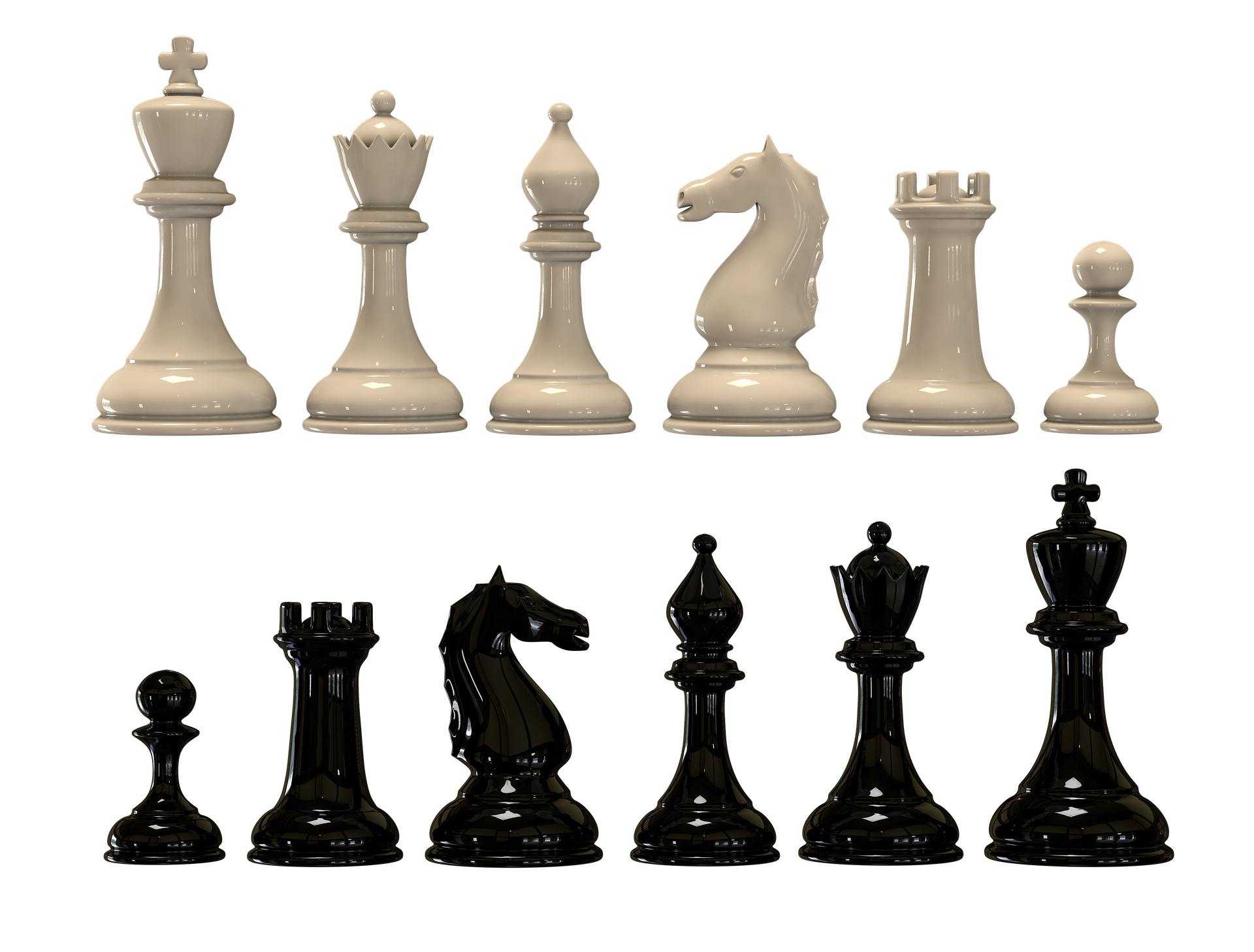
Intro
When it comes to playing chess, it’s important to have a solid understanding of the value of each chess piece. This is because knowing the relative value of chess pieces can be the difference between a win and a loss.
In this blog post, we will explore the chess piece values of each piece on the board. Understanding the value of each chess piece is crucial to creating and executing successful strategies.

The Pawn: An Underestimated Force
Despite being the weakest chess piece on the board, the pawn’s value should not be overlooked.
While its value is only one point, pawns can be used to control and limit the opponent’s movement.
Pawns are crucial to creating defensive walls around the king and restricting the opponent’s pieces.
They can form powerful structures that can help create an attacking position. It’s important to remember that a pawn’s real value lies in its ability to limit the mobility of the opponent’s pieces.
This is especially true when the pawn is strategically placed in the center of the board, where it can control key squares and force the opponent to make unfavorable moves.
The pawn can also be used to create pawn chains, which can be very strong and hard to break.
A pawn chain can create weaknesses in the opponent’s position, allowing for an attack on the king. While it’s true that pawns are easily captured, they should not be sacrificed without careful consideration.
As the game progresses, pawns can become very powerful and can even be promoted to a stronger piece.
Overall, the pawn’s value should not be underestimated, as they can be crucial in creating and executing successful strategies on the chessboard.

The Knight: Mobility and Versatility Incarnate
The knight is a unique and valuable chess piece with a value of three points. Its mobility and versatility make it a crucial asset on the board. Unlike other pieces, the knight can jump over other pieces, making it harder to capture and an excellent piece for launching surprise attacks.
The knight’s movement pattern is also unique, as it can move two squares in one direction and then one square in a perpendicular direction. This allows the knight to control key squares on the board that other pieces cannot reach.
The knight’s value lies in its ability to control the board from positions that other pieces cannot reach. It can also be used to create deadly forks and attacks, where it attacks two pieces at once.
This can often lead to the capture of a valuable piece or the creation of an advantageous position.
The knight is also useful in the endgame, where it can become an extremely powerful piece. In fact, two knights and a king can often checkmate an opponent’s lone king.
It’s important to remember that the knight is not a long-range piece like the bishop or rook. It is most effective when used in close quarters, where its unique movement pattern can be used to control key squares on the board.
Additionally, the knight’s value is greater when it is placed in a central location, where it can control more squares and create more opportunities for attack.

The Bishop: The Long-Range Operator
The bishop is an essential piece on the chessboard.
With a value of three points, it is unique in that it can only move along diagonals, which allows it to control a large portion of the board. It is often used in conjunction with other pieces, particularly pawns, to create strong pawn structures.
Bishops are also useful in controlling the center of the board, which is essential for launching successful attacks.
A bishop’s power lies in its long-range movement and its ability to control key diagonals. This means that bishops can be used to attack multiple pieces simultaneously, forcing the opponent to make difficult decisions.
Additionally, bishops can be used to control open spaces on the board, which can limit the opponent’s movement and create opportunities for an attack. In the endgame, bishops become extremely powerful, especially when paired with a king or other pieces.
It’s important to remember that bishops work best when used in conjunction with other pieces, particularly other bishops. When two bishops are working together, they can control a large portion of the board and create devastating attacks.
Bishops are also useful in defending the king, particularly when they are placed on strong diagonals that limit the opponent’s movement.
Overall, the bishop is a valuable piece that should not be underestimated.
Its unique movement pattern and long-range capabilities make it an important part of any chess player’s strategy.
By using bishops strategically, players can control key areas of the board and create devastating attacks that can lead to victory.

The Rook: The Heavy Hitter
The rook, with a value of five points, is a heavy hitter on the chessboard. Its movement is restricted to horizontal and vertical lines, but it can move any number of squares along those lines.
Rooks are often used to control open files and can be particularly powerful when placed behind a pawn that is advancing towards the opponent’s side of the board.
They are also useful in creating threats against the opponent’s king.
Rooks, like other pieces, work best when used in conjunction with other pieces.
They can create devastating attacks when paired with a queen or bishop, particularly when controlling open files.
Rooks can also be used defensively, where they can protect key squares and prevent the opponent’s pieces from advancing. In the endgame, rooks can be extremely powerful and are often used to deliver checkmate.
It’s important to remember that rooks, while powerful, are not invincible.
They can be blocked by other pieces, particularly pawns, which can limit their movement. Additionally, they are vulnerable to attack, particularly when they are not protected by other pieces.
Despite these limitations, rooks are a crucial part of any chess player’s strategy and should be used strategically to create and execute successful plans.

The Queen: The Pinnacle of Power
The queen is the most powerful chess piece on the board and has a value of nine points.
Her ability to move in any direction and any number of squares makes her a formidable force to be reckoned with.
The queen is often used to create deadly attacks and can be a game-changer in many situations. However, her power can also be a liability if she is exposed to attack, so it’s important to use her strategically.
The queen is most effective when used to control the center of the board and to attack the opponent’s pieces. Her mobility allows her to move quickly to areas where she is needed most, and her power can often intimidate opponents into making unfavorable moves.
The queen is also useful in defensive situations, where she can protect key squares and limit the opponent’s movement.
It’s important to remember that the queen is vulnerable to attack, particularly when she is not protected by other pieces.
In fact, exposing the queen to attack is a common strategy used by skilled players to gain an advantage. Therefore, it’s important to use the queen wisely and to protect her at all times.
In the endgame, the queen’s power becomes even more pronounced, as she can often deliver checkmate on her own.
However, this is only possible when the opponent’s pieces are positioned in a way that allows for this kind of attack.
Otherwise, the queen must be used in conjunction with other pieces to create a successful strategy.
Overall, the queen is an extremely valuable piece that should be used strategically to create and execute successful plans.
Her power and mobility make her a force to be reckoned with, but it’s important to remember that she is also vulnerable to attack.
By using the queen wisely, players can create powerful attacks and become formidable opponents on the chessboard.

The King: The Eternal Monarch
The king is the most important piece on the chessboard. Its value cannot be measured since the game is over if it’s captured.
The king’s role is to stay safe and protected while directing its army to victory.
It is often said that the game of chess is won or lost based on how well the king is protected. In fact, in many situations, a strong king can be used as an attacking piece in the endgame, where it can be used to support pawns or attack the opponent’s pieces.
The king’s mobility is limited to one square in any direction, making it vulnerable to attack. Therefore, it’s important to keep the king protected at all times.
In the early game, this means castling the king to a safe position where it can be protected by other pieces.
Then, in the middle game, the king should be kept behind a wall of pawns or other pieces to limit the opponent’s attacks.
Lastly, in the endgame, the king should be used to support pawns or attack the opponent’s pieces, but only when it’s safe to do so.
It’s important to remember that the king is not invincible. It can be attacked and captured, which can lead to a quick end to the game. Therefore, the king should be protected at all times and used strategically to create and execute successful plans.
By keeping the king safe and using it wisely, players can create powerful attacks and become formidable opponents on the chessboard.

TLDR
In summary, having a thorough understanding of the value of each chess piece is essential for any player looking to create and execute successful strategies.
To understand this, one needs to know the generally accepted point values of each piece: a pawn is valued at one point, a knight and a bishop at three each, a rook at five, the queen is valued at nine, and the king is invaluable as the game ends when it is checkmated.
These values provide a basic framework for decision-making during the game.

Find out how to setup a chess board at the start
